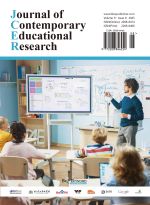Abstract
The integration of industry and education can not only give full play to the leading role of talents in rural revitalization, promote the development of social resources such as science and technology, industry, culture, education, and medical care, but also provide strong momentum for the rural revitalization strategy, and comprehensively promote rural construction in the new era. This paper analyzes the significance and problems of cultivating talents for rural revitalization through the integration of industry and education in higher vocational education, and makes a preliminary exploration on the countermeasures from three aspects: strengthening top-level design to connect education with rural areas, establishing a diversified training mechanism to meet talent needs, and innovating cooperation models to shorten the distance between schools and villages.
References
Zhu J, Wang T, 2023, Research on strategies of integrating industry and education in higher vocational education to boost rural talent revitalization, Journal of Smart Agriculture, 3(18): 185–188.
Lyu C, 2024, Research on the mode of integrating industry and education in higher vocational education to boost rural revitalization, Neijiang Science & Technology, 45(6): 60–61.
Gu Y, Wu R, Guo Y, et al., 2024, Research on the path of vocational education rural industry talent training under strategy of rural revitalization, Southern Agricultural Machinery, 55(10): 123–126.
Guo G, Li Y, Liu Y, 2023, Problems and promotion strategies of integrating industry and education in vocational education for cultivating high-quality talents for rural revitalization, Jiangsu Higher Vocational Education, 23(1): 7–14.
Liang J, 2024, Research on problems and countermeasures of Jiangxi agricultural vocational colleges serving rural talent revitalization, Jiangxi Agricultural University.
Shen L, 2023, Logical starting point, key tasks and Lishui typical practice of higher vocational education empowering rural revitalization in old revolutionary base areas, In: Proceedings of 2023 Zhejiang Rural Revitalization Strategy Forum (Volume I).
Guo G, Li Y, Liu Y, 2023, Problems and promotion strategies of integrating industry and education in vocational education for cultivating high-quality talents for rural revitalization, Jiangsu Higher Vocational Education, 23(1): 7–14.
Qin X, Liu B, Zhang X, et al., 2024, Research on the path of integrating industry and education in higher vocational aquaculture major under the background of rural revitalization: a case study of integrating industry and education in Guangxi turtle and turtle industry, 2024(2): 125–127.
Huang X, 2023, Research on integrating industry and education in rural vocational education from the perspective of rural revitalization, China Fruits, 2023(10): 162–163.
Liu J, 2023, Research on the path of talent cultivation through integrating industry and education in vocational education under the background of rural revitalization, Guide to a Happy Life, 2023(27): 148–150.
Li L, Wu X, Liao C, 2023, Existing problems and countermeasures of the talent cultivation mode of integrating industry and education in e-commerce in higher vocational colleges under the background of rural revitalization strategy, 2023(7): 134–138.
Shen Y, 2023, Research on the curriculum system of integrating industry and education mode in college advertising art design major under the background of rural revitalization, Oriental Culture Weekly: 64–66.
Dai Y, 2024, Research on deepening the integration of industry and education in agricultural vocational education under the background of rural revitalization strategy, Policy & Scientific Consult, 2024(7): 174–177.
Nong L, 2023, Research on problems and countermeasures of talent cultivation in higher vocational colleges under the background of rural revitalization strategy, Guangxi University for Nationalities.
Ke Z, 2022, The logical connotation and practical path of “three teachings” reform of higher vocational education under the background of high-quality development, Journal of Guangdong Light Industry Vocational Technology College, 21(6): 39–44.
